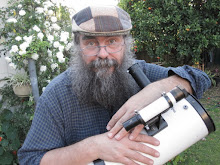Tuesday, January 14, 2025
Thursday January 16 to Thursday January 23
The Last Quarter Moon is Wednesday January 22. In the evening Venus is close to Saturn between the 17th and 20th and closest on the 18th. Jupiter, Saturn, Venus and Mars are visible all together (briefly) in the evening sky (as are Uranus and Neptune, but you can't see them with the unaided eye). Jupiter is past opposition and is visible all evening long. Mars is rising in the evening sky, and was at opposition, when it is biggest and brightest as seen from Earth, on the 16th. Mercury is low in the morning twilight. Comet C/2024 G3 (ATLAS) may be visible in the evening twilight, from the 16th on.
The Last Quarter Moon is Wednesday January 22.The Moon is at apogee, when it is furthest from the Earth, on the 21st.
Similar views will be seen from the rest of Australia at the equivalent local time (30 minutes after sunset).
Venus is readily visible from early twilight to when the sky is fully dark. Venus is coming closer to Saturn. Between the 17th and 20th Venus is less than 3° from Saturn, and the pair are closet on the 18th.
The insets are the telescopic views of Venus and Saturn at this time.
Similar views will be seen from the rest of Australia at roughly the equivalent local time (90 minutes after sunset).
Similar views will be seen from the rest of Australia at roughly the equivalent local time (90 minutes after sunset).
Similar views will be seen from the rest of Australia at roughly the equivalent local time (45 minutes before sunrise).
Elsewhere in Australia will see a similar view at the equivalent time (90 minutes after sunset).
Mercury is low in the morning twilight.
Venus is high in the evening twilight and is readily visible in the evening twilight. In the evening Venus is close to Saturn between the 17th and 20th and closest on the 18th.
Mars is rising in the evening sky. Mars was at opposition, when it is biggest and brightest as seen from Earth, on the 16th and is visible all night long.
Jupiter is rising in the the evening sky when the sky is fully dark and was at opposition, when it was biggest and brightest as seen from Earth, on the December the 8th.
Saturn is lowering in the evening sky coming closer to Venus. The pair are closet on the 18th.
Star Map via Virtual sky. Use your mouse to scroll around and press 8 when your pointer is in the map to set to the current time.
Cloud cover predictions can be found at SkippySky.
Here is the near-real time satellite view of the clouds (day and night) http://satview.bom.gov.au/
Labels: weekly sky







 Click to read about or order
Click to read about or order Click to read about or order
Click to read about or order Click to read about or order
Click to read about or order Click to read about or order
Click to read about or order